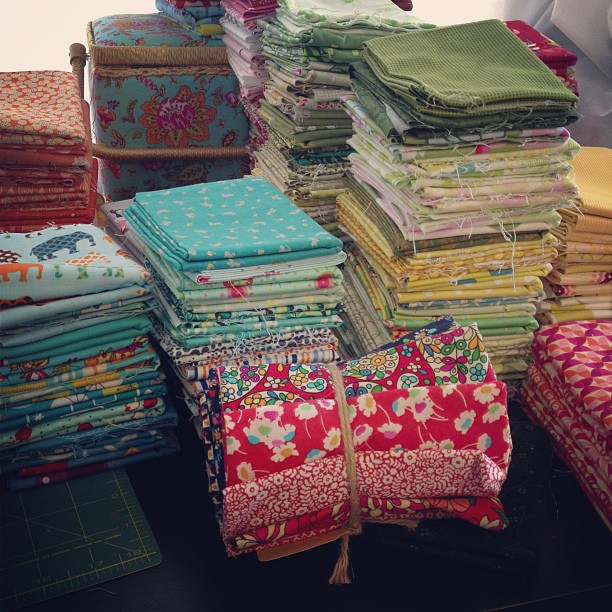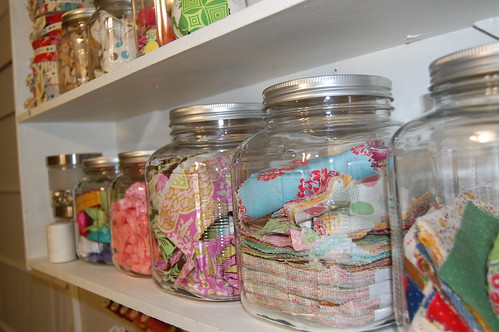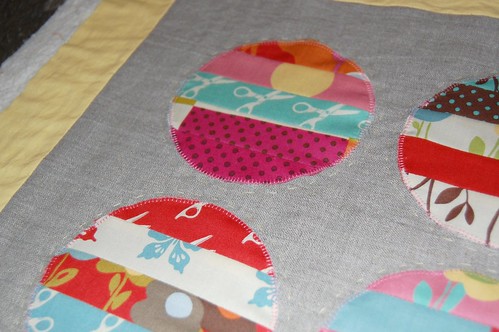Helpful Tips for Quilting Guilds to Enhance Your Crafting Experience
Begin each session by outlining your specific goals. Write them down to maintain focus and clarity throughout your meeting. This approach not only streamlines discussions but also enhances accountability among members.
Rotate leadership roles within the circle to encourage diverse perspectives and fresh ideas. This practice helps everyone feel valued and boosts communal engagement, fostering a more collaborative atmosphere.
Set up a sharing platform for completed works and ongoing creations. Encourage members to present their pieces, discussing techniques and challenges faced. This exchange cultivates a spirit of mentorship and enriches the learning experience for all.
Organize regular workshops featuring different techniques or styles, led by skilled members. Hands-on experiences promote skill development and camaraderie, allowing participants to learn in a supportive setting.
Facilitate community outreach by organizing charity drives or local events. Collaborating on projects that benefit the wider community can strengthen group bonds while making a positive impact.
Lastly, maintain open lines of communication within the assembly. Regular check-ins can help identify collective needs and preferences, ensuring that all voices are heard and valued in the creative process.
Selecting the Right Fabrics for Your Quilt
Choose 100% cotton fabric for durability and ease of use. This material retains its shape well and is ideal for intricate designs. Pay attention to fabric weight; lighter options work well for piecing, while heavier ones provide structure for borders and backing.
Consider color palettes and patterns. Select fabrics that complement each other, employing a mix of solids and prints. Utilize a color wheel to identify harmonizing tones or contrasting shades that elevate your design.
Test fabric combinations before cutting; create small swatches to visualize how they interact. Confirm that the colors maintain their vibrancy after washing, as some fabrics may bleed or fade. Always pre-wash fabrics to prevent shrinkage later on.
Explore different textures. Incorporating various surface finishes, such as flannel or batik, can enhance depth and visual interest. Be mindful of fabric properties; for instance, some blends may fray more than others.
Think about the quilt’s purpose. Select fabrics suitable for the intended use, such as soft materials for baby quilts or sturdier options for throw blankets. Prioritize quality; it impacts the longevity and wear over time.
Source materials from reputable suppliers. This ensures consistency in dye lots and fabric quality, which is critical for achieving a cohesive look. Visit local fabric stores to physically feel the fabrics if possible.
Plan your budget. High-quality fabrics may incur higher costs, so balance your needs with financial constraints. Consider buying in bulk to save on frequently used materials.
Organizing Productive Quilt Meetings
Set a clear agenda for each gathering. Distribute it in advance to ensure all participants understand the meeting’s objectives and topics to be discussed. This practice minimizes time wastage and promotes focus.
Time Management
Allocate specific time slots for each agenda item. Use a timer to keep discussions on track. This approach encourages brevity and helps address all planned points without digressing.
| Agenda Item | Time Allotted | Responsible Person |
|---|---|---|
| Project Updates | 15 minutes | Member A |
| New Techniques Showcase | 30 minutes | Member B |
| Community Outreach Plans | 20 minutes | Member C |
Encourage Participation
Implement structured rounds to ensure every member has the opportunity to share thoughts or updates. This practice nurtures inclusivity and helps quieter members voice their input.
Sharing Techniques to Enhance Skills
Organize regular workshops where members demonstrate specific methods or tools. This enables hands-on learning and immediate feedback, fostering peer-to-peer education.
Implement a technique swap, encouraging each participant to prepare a short segment on a unique skill. This variety enriches the experience and broadens the expertise across the collective.
Utilize social media groups or forums dedicated to skill exchange. Engaging discussions online often lead to new ideas and resources that can be shared easily among enthusiasts.
Encourage the creation of instructional videos by skilled members. Visual demonstrations can clarify complex techniques and serve as a lasting resource for anyone looking to improve.
Arrange focus groups that concentrate on particular techniques or styles. By collaborating, members can share insights and tackle challenges collectively, enhancing learning outcomes.
Promote collaborative projects that incorporate multiple skills. Working together on a single piece can provide exposure to different methods and encourage creative problem-solving.
Develop a resource library filled with books, magazines, and patterns that cover a wide range of techniques. Members can borrow materials to explore new concepts and practices at their own pace.
Host a challenge where participants implement a specific technique within a limited timeframe. This not only sharpens skills but also introduces an element of fun and friendly competition.
Encourage feedback sessions after completing projects. Constructive critiques from peers can highlight areas for improvement and reinforce successful practices.
Celebrate milestones and achievements within the group. Recognition of progress motivates members to continue honing their skills and sharing their knowledge with others.
Planning Collaborative Quilt Projects
Establish a clear theme or concept before beginning. This sets a foundation for all participants and ensures consistent direction throughout the endeavor.
Gather input from every member regarding design preferences and techniques to utilize. Organize a brainstorming session to encourage creativity and facilitate discussions about individual styles and ideas.
Allocate roles based on strengths; some individuals may excel at fabric selection, while others may be skilled in sewing or piecing. Define responsibilities clearly to enhance workflow and efficiency.
Choose a common timeline with interim deadlines for each phase, such as fabric acquisition, cutting, sewing, and assembly. Regular check-ins can motivate progress and address any issues promptly.
Decide on a communication platform, whether it be a group chat, email chain, or project management tool, to keep everyone updated and engaged. Clear communication reduces misunderstandings and fosters collaboration.
Create a shared document for tracking contributions and materials used. This promotes accountability and helps in resolving any discrepancies that may arise during the project.
Schedule periodic gatherings, either in-person or virtually, to strengthen connections among participants and review progress collectively. These meetings can be social opportunities as well as project check-ins.
Consider hosting a dedicated day for assembly and finishing touches to bring all members together for the final stages. This encourages a sense of completion and shared achievement.
Document the entire process through photos or notes; this preserves memories and can serve as a reference for future efforts.
Managing Time and Resources for Quilting Success
Establish a clear schedule for your sewing sessions. Allocate specific time slots during the week dedicated solely to your craft. This helps create a routine and ensures consistent progress.
Organize your materials systematically. Use labeled containers or bins to categorize fabrics, threads, and tools. Easy access to supplies minimizes interruptions and maximizes productivity.
Prioritize Tasks
Break down larger pieces into manageable tasks. Create a checklist of steps such as fabric selection, cutting, piecing, and quilting. Tackle one step at a time to reduce overwhelm and maintain focus.
Consider the size and complexity of the piece. Set realistic deadlines based on your availability and skill level, allowing buffer time for unexpected challenges.
Utilize Resources Wisely
Join local sewing circles or online forums to share resources and knowledge. Exchanges with peers can provide not only support but also access to materials or tools you might not have.
Invest in tools that enhance productivity. A good rotary cutter, cutting mat, and quality sewing machine can significantly speed up the process and improve results.
Building Strong Relationships Within Your Guild
Establish regular check-ins to maintain communication. Monthly gatherings can encourage discussions about ideas and suggestions, allowing every member to share their experiences and insights.
Encourage Collaboration
- Organize group projects where members can contribute their skills.
- Create smaller teams for specific tasks to enhance interaction and engagement.
- Designate roles based on individual strengths to foster a sense of ownership.
Recognize Contributions
Acknowledge the achievements and efforts of your peers to boost morale. Celebrate milestones, whether it’s completing a task or sharing a personal project. A simple shout-out during meetings or a dedicated board highlighting accomplishments can make a significant difference.
Facilitate skill-sharing sessions. Members can lead workshops on unique techniques, creating an opportunity for learning and strengthening bonds. This not only improves individual abilities but also enhances the collective intelligence of the group.
- Encourage mentorship pairings to build lasting connections.
- Promote informal social gatherings to break down barriers.
- Utilize online platforms for members to communicate in between meetings.
As relationships deepen, trust flourishes. This foundation will lead to more productive collaborations and a supportive environment. Be open to feedback and willing to adapt, ensuring all voices are heard. Prioritize creating an atmosphere where everyone feels valued and integrated.
Q&A: Quilting guild tips
How can attending a quilt guild meeting help quilters get to know others and improve their skills?
Attending a quilt guild meeting allows quilters to get to know fellow makers, share experiences during show and tell, and exchange valuable quilting tips. These gatherings often include demos, social time, and a good time bonding over a shared love of quilting, whether you’re new or experienced.
What makes participating in a block of the month activity at a quilting group rewarding?
A block of the month activity gives guild members a chance to make something on a schedule, improving their technique while contributing to a shared project. It’s especially fun in a quilting group, where members attend regularly and celebrate completed blocks during quilt guild meetings.
Why do quilt guilds often invite guest speakers or experienced quilters to their events?
A guest speaker, often an experienced quilter, brings fresh perspective, inspiration, and sometimes live tutorials to a guild meeting. Whether hosted by a modern quilt guild or a local quilt group, these events enhance learning and expose members to upcoming trends in the quilting world.
How does volunteering at a guild’s quilt show help members feel more connected?
When guild members volunteer at a quilt show, they become more involved in the guild’s mission, interact with guests, and showcase their contributions. It strengthens their sense of community and often leads to deeper connections with fellow quilters.
What are the benefits of being part of a guild for those who want to donate quilts or give back?
Being part of a guild provides opportunities to donate quilts to charity or special causes. Many guilds make a quilt together from blocks, or organize drives where members stitch and bind quilts that are distributed to those in need.
Why do quilt guild meetings often include snacks and shopping opportunities?
Quilt guild meetings often include a snack break to create a relaxed social atmosphere, and some even invite vendors or host a shop table. This gives guild members time to mingle, share quilting tips, and explore new materials or tools while enjoying a good time.



